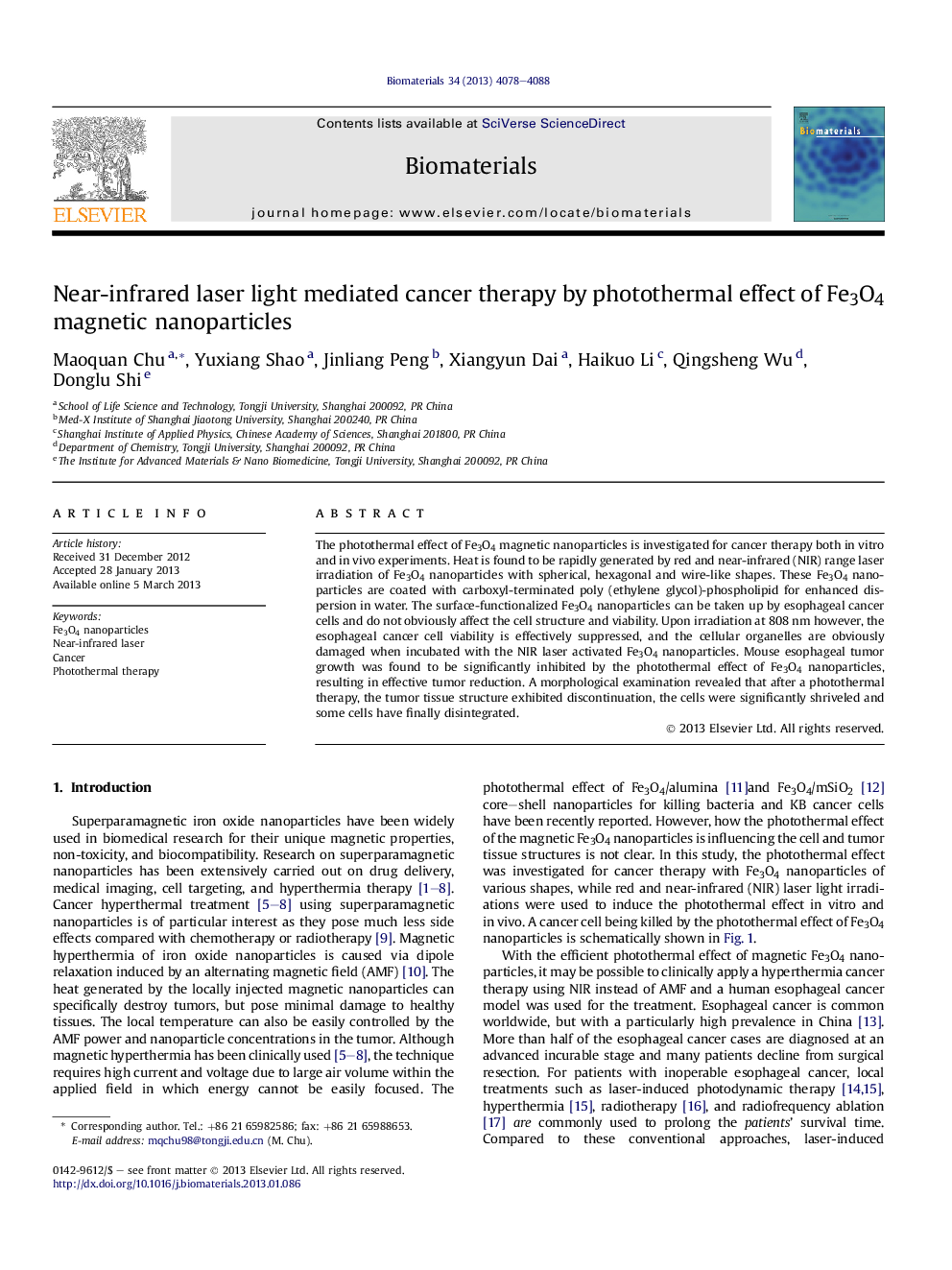| Article ID | Journal | Published Year | Pages | File Type |
|---|---|---|---|---|
| 6159 | Biomaterials | 2013 | 11 Pages |
The photothermal effect of Fe3O4 magnetic nanoparticles is investigated for cancer therapy both in vitro and in vivo experiments. Heat is found to be rapidly generated by red and near-infrared (NIR) range laser irradiation of Fe3O4 nanoparticles with spherical, hexagonal and wire-like shapes. These Fe3O4 nanoparticles are coated with carboxyl-terminated poly (ethylene glycol)-phospholipid for enhanced dispersion in water. The surface-functionalized Fe3O4 nanoparticles can be taken up by esophageal cancer cells and do not obviously affect the cell structure and viability. Upon irradiation at 808 nm however, the esophageal cancer cell viability is effectively suppressed, and the cellular organelles are obviously damaged when incubated with the NIR laser activated Fe3O4 nanoparticles. Mouse esophageal tumor growth was found to be significantly inhibited by the photothermal effect of Fe3O4 nanoparticles, resulting in effective tumor reduction. A morphological examination revealed that after a photothermal therapy, the tumor tissue structure exhibited discontinuation, the cells were significantly shriveled and some cells have finally disintegrated.
